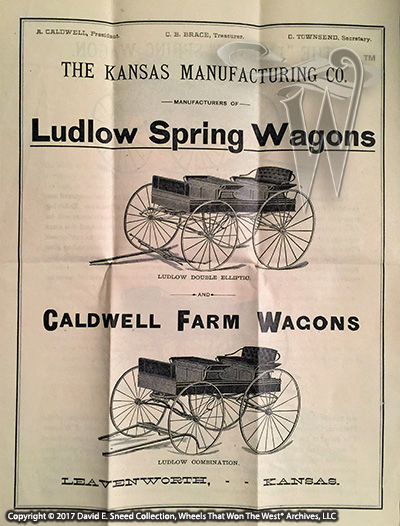Recognizing the rarest parts of our transportation past is not always easy. For me, the journey’s taken decades of research and discovery. It’s easy to look back on the past and see benefits in it. In moments of disappointment, though, the frustrations of dead ends, lackluster finds, and even mistakes can be tough to deal with. Like any journey, there’s a lot that can be learned through the process of taking on a destination.
The more I’ve studied America’s earliest wheels, the more intrigued I’ve become with the whole story – especially those elements related to heavier western transports. As I’ve traveled, I’ve discovered that if my search is too focused and narrow, I’ll miss a lot of great and truly rare pieces. So, today, our collection includes much more than vehicles and associated sales literature. Original signage, manufacturing tools, vehicle accessories, and the like, all contribute to the story of the whole. As such, each can add to the intrigue and interest in a collection while helping preserve all-but-forgotten parts of our past.
For those that may be relatively new to vehicle collecting, there are a couple things that are likely going to happen as you seek out your favorite treasures. First, you’re going to make mistakes. Second, you likely won’t appreciate the value of those mistakes at the time. Nonetheless, this process happens to anyone serious enough to stick with collecting – whether for investment potential or just the fun of it. Along the way, there’s a hard side to learning. Some things that may look valuable, often aren’t. At other times, some things that don’t look valuable, may very well be. How do you determine what is and what isn’t the best investment? Dedicated research and lengthy experience can be great teachers. The problem with experience is that it usually involves a past full of mistakes. One shortcut is to listen to those who’ve gone before us. Hence the value of primary source materials. They can open up a world of knowledge to guide us through the maze of what’s what.
Sometimes, we all can get impatient as we search for pieces we really want. The challenges in finding those truly desirable pieces might even knock us down from time to time, convincing us that “all the good stuff is gone.” In fact, I’ve heard folks repeat those words many times. Unfortunately,if we hear things repeated enough, we may start believing them – even if they’re not true.
Time and again, patience and persistence have a way of paying off. You may be looking for a certain brand wagon and have no luck for years. Then, one day, it appears out of nowhere. I’ve been looking for a nice 42” Peter Schuttler spring seat for years. Over and over, I failed in my searching. Then, earlier this year, I casually mentioned my search to a fellow bidder at a sale. Yep, she had one. Great paint, great logo, original in every respect. And yes, I have it now. Point being... don’t give up your searches. You never know what’s waiting just around the corner.
To reinforce that point, I thought I’d share a few more finds we’ve been fortunate to come across in the past few months. Some are now in our collection while others reside with other private collectors. All offer an opportunity to better understand America’s first transportation industry. Through these surviving elements, we’re able to know more about individual brands, vehicle timeframes of manufacture, levels of originality, unique features, manufacturing techniques, vehicle performance, and more. Hopefully, it’s a reminder that there are still exciting finds out there just waiting to be uncovered and saved from oblivion.
 |
| Earliert his year, I ran across a very early Columbus brand wagon in a private collection in Kansas. While most of the vehicle’s paint is gone, it’s a rare survivor, likely dating to 1904 or 1905. |
 |
| Doug Hansen is not only an exceptional craftsman, when it comes toc ollecting, he has a real eye for quality. The two photos above show him with a one-of-a-kind rave frame wagon box likely used as a patent model or promotional sample. |
 |
| This spoke tenoning machine was patented near the end of the Civil War. At more than a century and a half in age, it’s a fully-functioning survivor. |
 |
| While primitive by today’s metal-shaping standards, this 1879 tire bender can still craft a wide variety of steel tire circumferences, widths, and thicknesses. |
Please Note: As with each of our blog writings, all imagery and text is copyrighted with All Rights Reserved. The material may not be broadcast, published, rewritten, or redistributed without prior written permission from David E. Sneed, Wheels That Won The West® Archives, LLC




